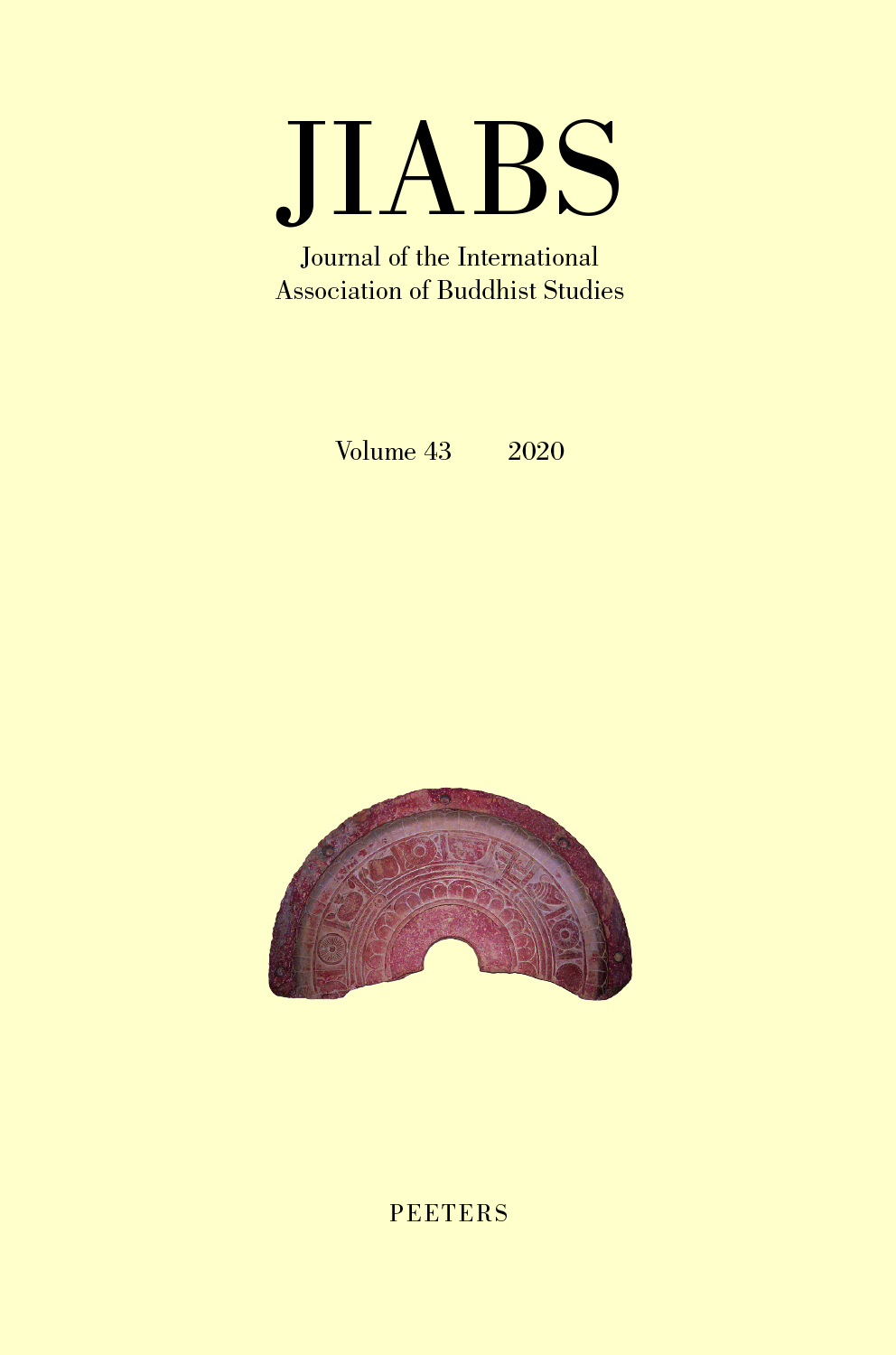 previous article in this issue previous article in this issue | next article in this issue  |

Preview first page |
Document Details : Title: Some Dwags po Mahāmudrā Responses to Sa skya Paṇḍita's Critique at 'Present-day Mahāmudrā' Author(s): DRASZCZYK, Martina Journal: Journal of the International Association of Buddhist Studies Volume: 39 Date: 2016 Pages: 375-403 DOI: 10.2143/JIABS.39.0.3200531 Abstract : One of the more influential responses to the 8th century Tibetan Bsam yas Debate was Sa skya Paṇḍita’s (1182-1251) critique of 'present day' non-gradual Mahāmudrā teachings as promoting the same kind of amanasikāra (mental non-engagement) involving the cessation of all thought activity that was attributed to the Chinese Chan contestant Heshang Moheyan. While the historical background and reasons for Sa Paṇ’s pointed criticism have been well-documented by D. Jackson, the extensive and often illuminating responses by Bka’ brgyud pa scholars of the classical period have received little attention. This paper examines responses by certain renowned Bka’ brgyud pa masters from the 15th and 16th centuries, with a particular emphasis on the issue of amanasikāra teachings as taught in the Dwags po Mahāmudrā tradition originating from Sgam po pa Bsod nams rin chen (1079-1153). A survey of writings on this subject by the Eighth Karma pa Mi bskyod rdo rje (1507-1554), Shākya mchog ldan (1428-1507), Zhwa dmar Chos grags ye shes (1453-1524), and Karma phrin las pa Phyogs las rnam rgyal (1456-1539), confirm that the Dwags po Mahāmudrā approach to mental nonengagement is in line with Maitrīpa’s interpretation of amanasikāra as an unmediated direct perception of reality. In other words, amanasikāra stands for a well-founded awareness of the unity of appearance and emptiness which prevails when dualistic thoughts have ceased. These authors are unanimous that when Sgam po pa emphasized, for those of highest acumen, a nongradual path of direct perception of ultimate reality which does not necessarily involve elaborate tantric practices, he was simply elaborating a system of thought and practice that was already well-established by the Indian Buddhist siddhas and their commentators. |
 |


